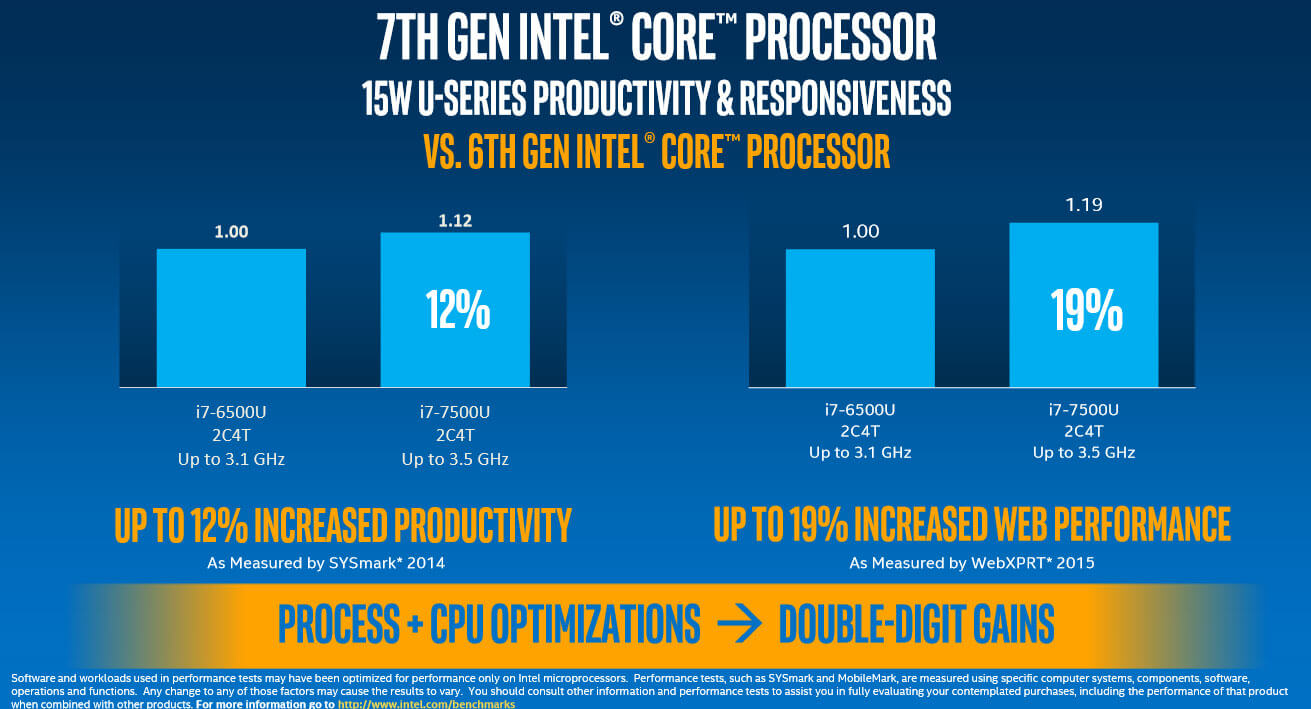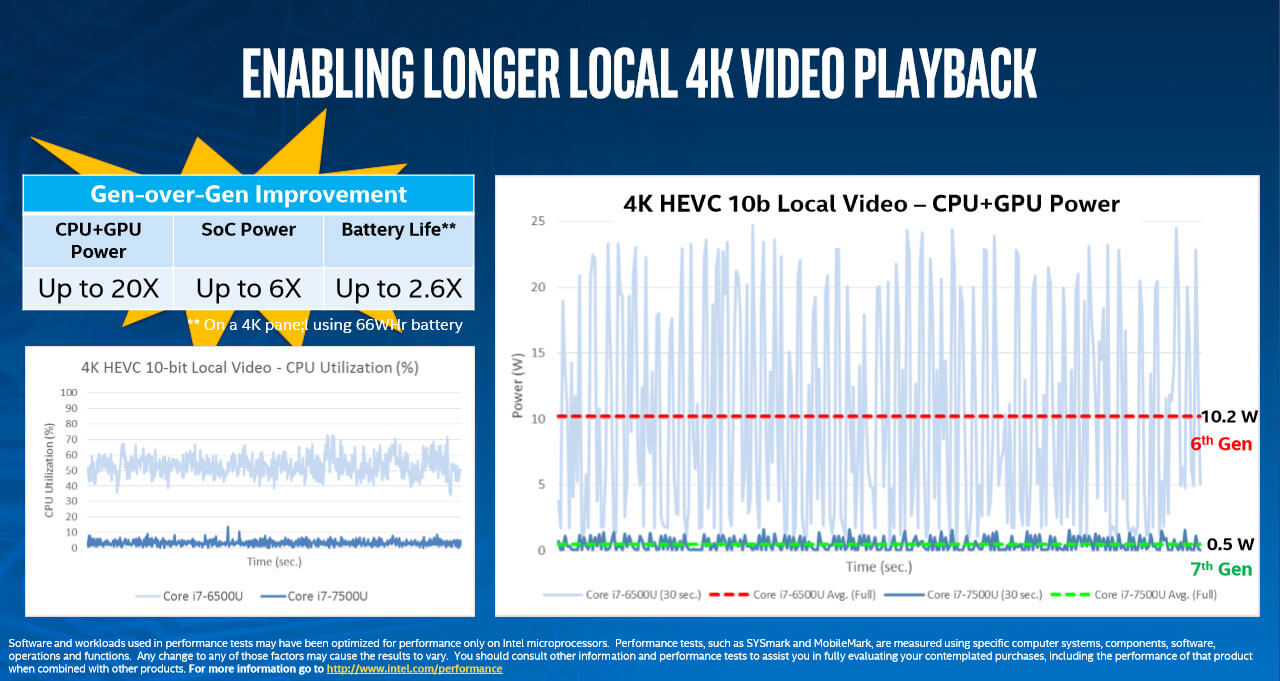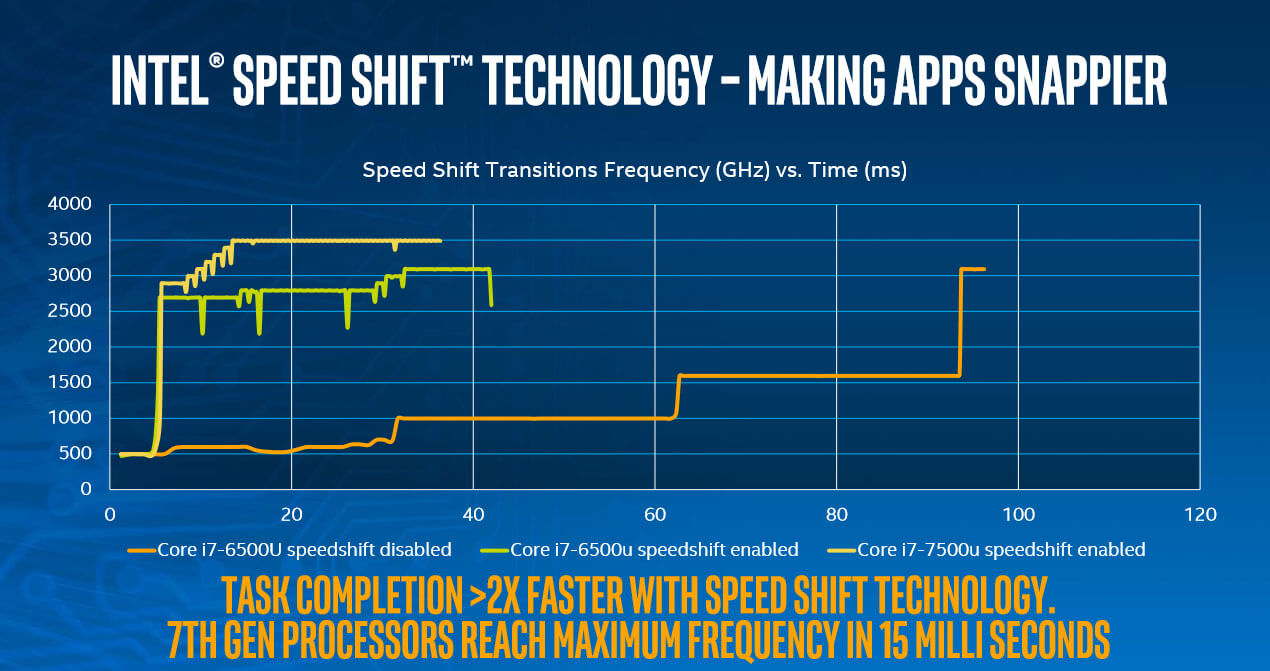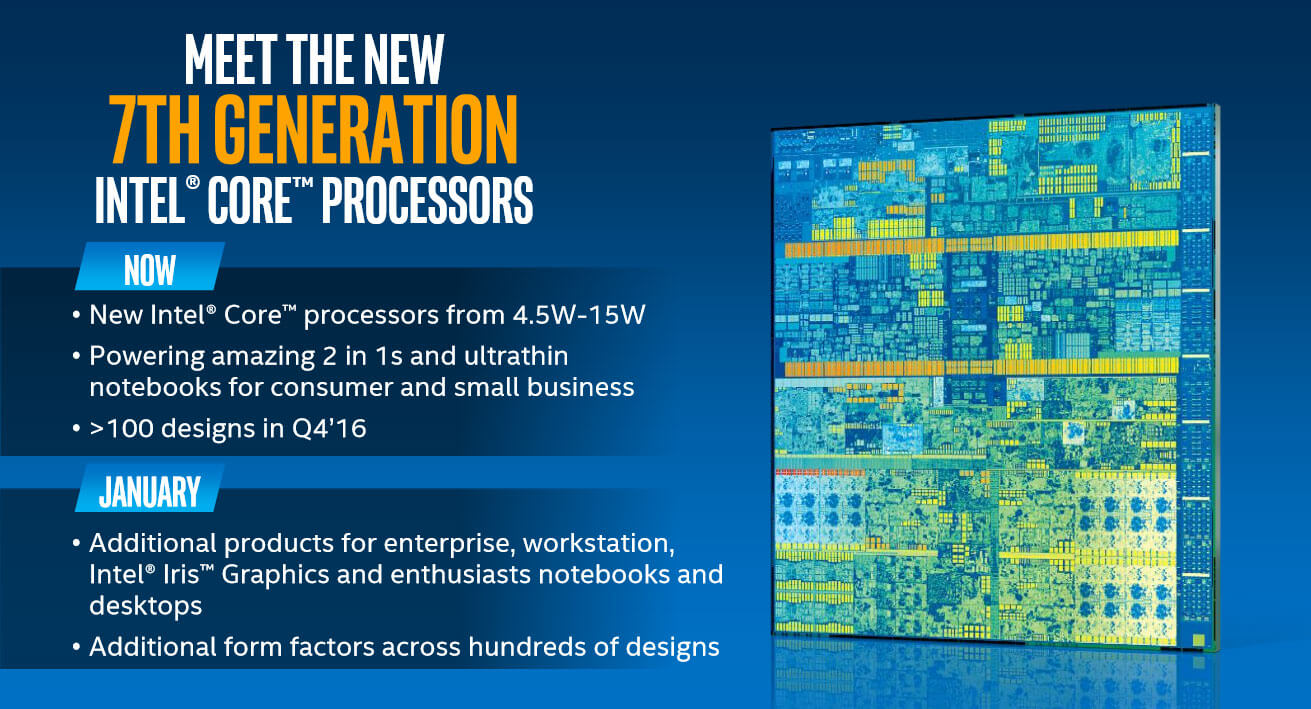Intel has today unveiled their next generation of Core processors, codenamed 'Kaby Lake', starting with low power U- and Y-series parts for ultrabooks, tablets and convertibles.
Like some of Intel's past CPU launches, low-power SKUs in the 4.5W to 15W range are coming to the market first, with Intel expecting the release of more than 100 designs in Q4 2016. More powerful Kaby Lake variants, including SKUs for desktops and high-performance notebooks, will be unveiled in January 2017.
As expected, Kaby Lake is Intel's third processor line manufactured using a 14nm process. However, Intel has made some tweaks to their 14nm process to improve the performance of their CPUs, including improved fin profile and transistor channel strain. These factors help deliver a 12 percent process performance improvement, which brings superior performance and energy efficiency to Kaby Lake when combined with architectural gains.

So what sort of performance gains are we looking at? Intel likes to obfuscate performance data in their press material, but it seems Kaby Lake brings around 25 percent better performance per watt than Skylake. Intel is also reporting double digit gains when comparing the new Core i7-7500U to the Core i7-6500U - 12% better "productivity" and 19% better web performance - although part of these gains can be attributed to Kaby Lake's higher clock speeds rather than pure IPC improvements.
We'll have to wait until we can get some hands-on time with new Kaby Lake notebooks to see how real-world performance stacks up to last-generation products.

One of the major upgrades that Intel has made in Kaby Lake is an improved media engine built upon the company's Gen9 graphics architecture. The Multi-Format Codec (MFX) has been upgraded to support the latest media standards, including 4K 10-bit HEVC decode/encode, 10-bit VP9 decode, and 8-bit VP9 encode. The Video Quality Engine (VQE) also sees improvements, bringing HDR tone mapping and Wide Color Gamut (Rec.2020) support.
Intel has targeted power efficiency while designing the new media engine, which allows Y-series parts to support 4Kp30 HEVC encodes in real time. Power usage data shows significant decreases during 4K 10-bit HEVC and 4K VP9 YouTube playback on the Core i7-7500U compared to the i7-6500U, which will lead to increased battery life.

Speed Shift technology has been improved in Kaby Lake as well, which allows 7th-generation parts to reach their maximum frequency in just 15 miliseconds. Reaching maximum clock speeds in a shorter amount of time translates into better performance and faster task completion.
So far, Intel has announced six Kaby Lake SKUs: three 4.5W Y-series parts, and three 15W U-series parts. What we know about these CPUs is listed in the table below:
| Model | Cores / Threads | Base Frequency (GHz) | Single-Core Turbo Frequency (GHz) | Memory | TDP |
| Core i7-7Y75 | 2/4 | 1.3 | 3.6 | Dual Channel DDR3L 1600 MHz LPDDR3 1866 MHz |
4.5W |
| Core i5-7Y54 | 1.2 | 3.2 | |||
| Core m3-7Y30 | 1.0 | 2.6 | |||
| Core i7-7500U | 2.7 | 3.5 | Dual Channel DDR3L 1600 MHz LPDDR3 1866 MHz DDR4 2133 MHz |
15W | |
| Core i5-7200U | 2.5 | 3.1 | |||
| Core i3-7100U | 2.4 | N/A |
We should be hearing more about new Kaby Lake notebooks and convertibles over the coming days, with availability slated for Q4 2016.
